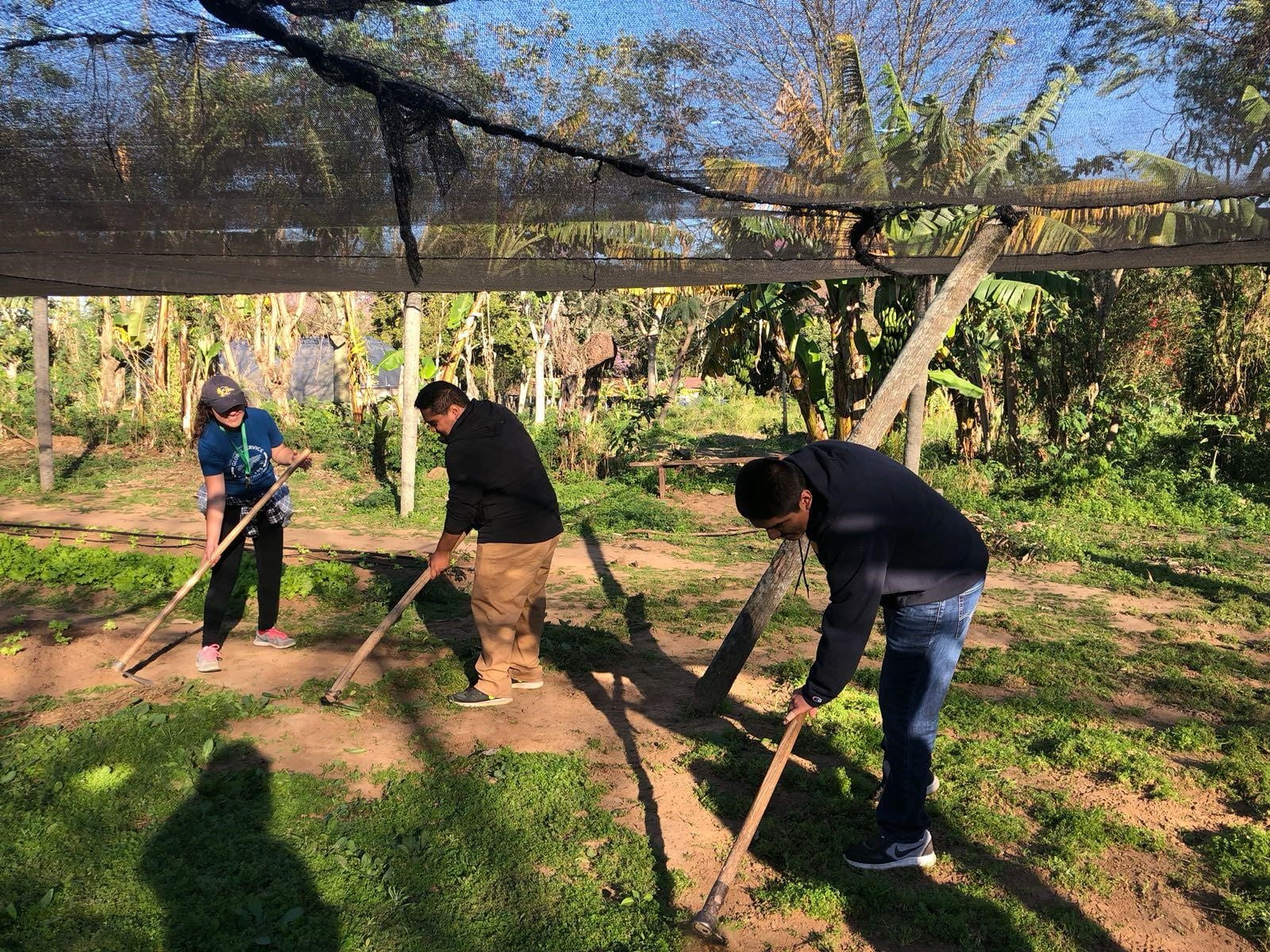Global Service Scholar: Anissa Balderas
Country: Paraguay
Entering the Escuela Agricola de San Francisco was like walking into a different realm. The environment was completely unmatched by anything I had seen in the United States. The trees towered over the school and the green ambiance was calming. The school has a hotel, classrooms, and is equipped with a farm and lactation production center.
During our first week here, we were given our schedules. We would work alongside the students: cleaning at 6 a.m., breakfast, farm work, lunch, and then more work. While I adjusted to the early mornings, it wasn’t until after the first couple days that I realized what our purpose in the school is.
Initially, I had imagined a group of young college students walking into an impoverished pueblo and providing labor to help the farm. During the first week, instead of farm work, I assisted the marketing team in door to door sales. My buddy, Andrea from Bolivia, and I sold lettuce and chicken. As an introverted young adult, this was a bit stressful.
The next week I worked in the Huerta, in agriculture, using the hoe to work the land. This was strenuous on my body and I felt every movement. This work with the students was not for their benefit, but for ours. We, mainly inner city kids from the United States, are learning basic agriculture skills that these students thrive on. Our volunteer work takes a different form that I had not expected.
The school has attained self sufficiency, but, like any other high school, it has its problems. My group in particular is working to create a safe space for students to feel comfortable about taboo topics — sex education, bullying and mental health. As college students, we have certain experiences and skills under our belts to help the school; and in turn, the school has skills to teach us.
While volunteering labor for a week is helpful, we are working to make a lasting impact on the school and future students to come. Our experience here is based on giving and receiving. Harmonious relationships, whether it be with people or nature, work in that manner and I am learning this along the way.
While our end goal is to create a lasting impact on the school, an obstacle my group in particular is facing is that of sustainability. How can we create a program, a club or a campaign and let it live on, run by the students, after our short time here? While we are taking each day one at a time, I am learning to go with the flow and put forward my best intentions. Our purpose here is to make the school a place that shapes well-rounded individuals — socially, emotionally and academically — and we are opening space for the students to take the lead.

